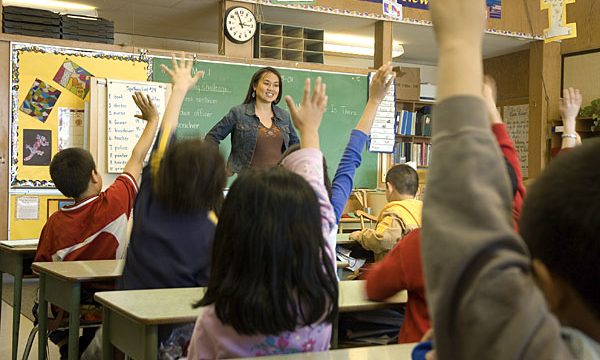North Dakota K-12 Enrollment Is Up 2.35 Percent, State Spending Up Almost 200 Percent

The Legislature’s interim Education Funding committee kicked out a draft bill for K-12 education funding yesterday, and according to this report from Mike Nowtazki it would appropriate over $2 billion in the 2015-2017 biennium, a more than $400 million increase.
Now, usually when voters hear education spending, the only thing they want to hear is “we’re spending more.” Because who wants to be accused of being anti-education by opposing spending increases, right? But it’s important to look at these numbers in context, because spending on K-12 education in North Dakota has been growing one heck of a lot faster than enrollment.
If the draft spending bill approved by the education committee yesterday goes through, state spending on K-12 education will have increased nearly 200 percent since the 2003-2005 biennium.

Enrollment during that time has not increased nearly so much. From the 2004-2005 school year enrollment has gone from just under 100,000 students to just over, a 2.35 percent increase:

To be fair, a lot of the increase in state spending on education is the alleged “property tax relief” the Legislature has been implementing which consists less of tax relief than of shifting local spending – mostly education spending – to the state budget. So the state’s share of K-12 funding is bloated because we’ve been trying to lower property taxes by shifting spending.
But even if we look at school district expenditures – the amount of dollars the schools are actually spending based on data from the Department of Public Instruction – we see a massive increase that’s far out of line with the trend in enrollment:

North Dakota’s enrollments have been growing of late, as the chart above shows. But even when enrollments were declining the state’s K-12 spending was seeing aggressive increases. And now that enrollment is growing again, those increases in spending seem even more aggressive.
Maybe it’s time to ask why it costs so much more to educate not that many more students.
I’d like to think that question would get asked and answered during the up coming 2015 session, but let’s face it. Questioning education spending isn’t a good political strategy.




